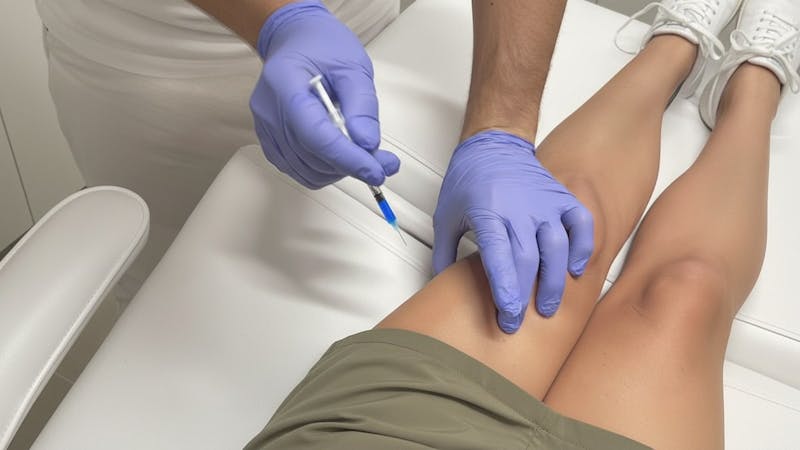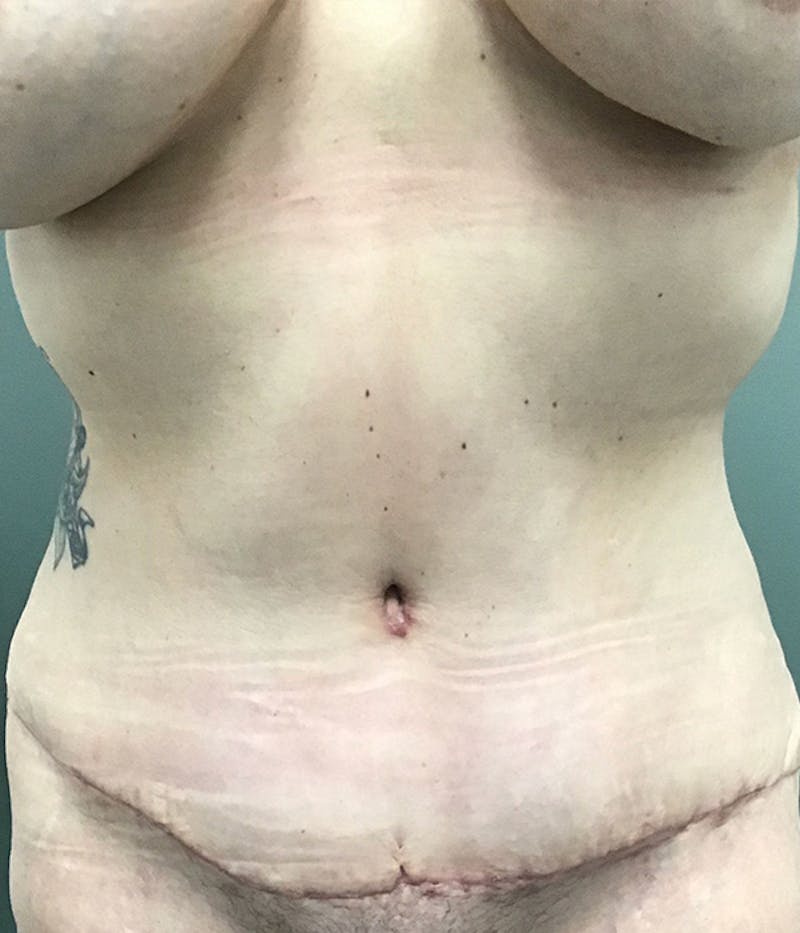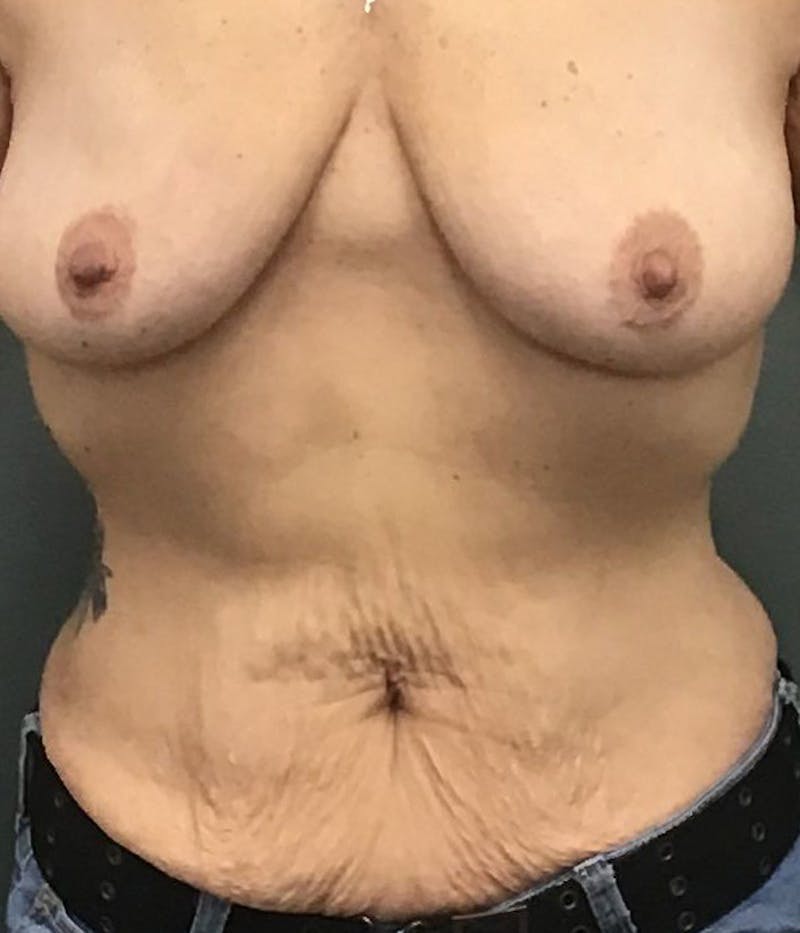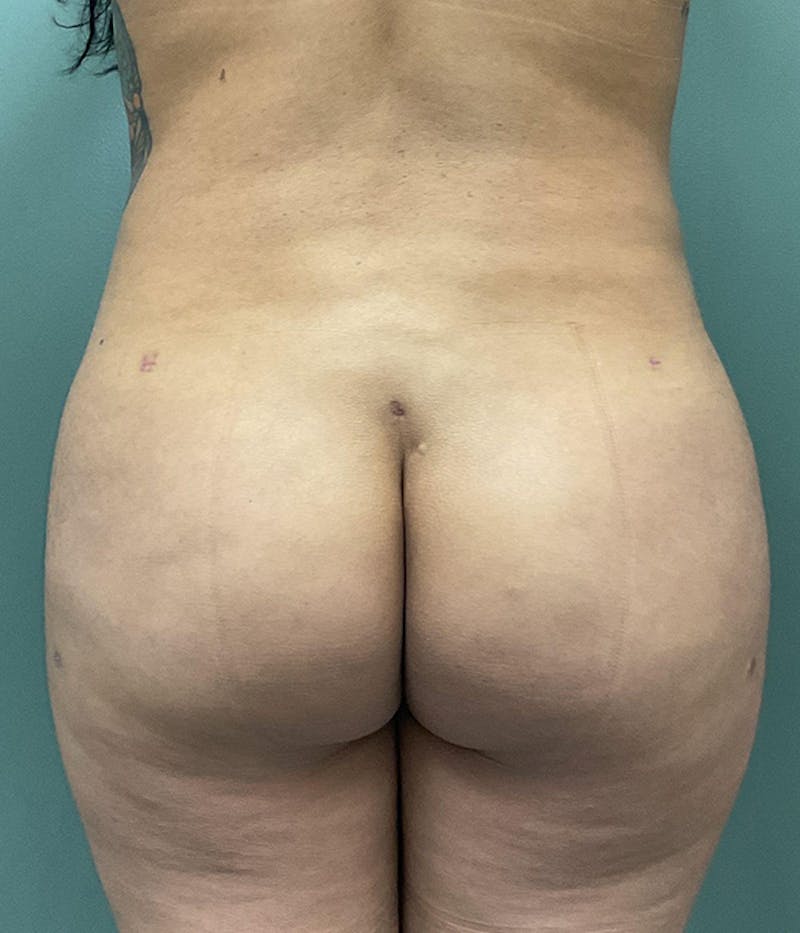
Rapid weight loss can feel like both a victory and a surprise. Many women and men in San Antonio describe a new frustration after GLP-1-assisted change: their thighs no longer match the rest of their transformation. Skin looks looser. Clothes fit differently. Chafing appears where it never did before.
In these moments, Dr. Michael Baumholtz, dual-board-certified Plastic Surgeon in San Antonio, offers straight talk and steady planning. His process is simple: Understand the concern → Evaluate the tissues → Choose the safest technique → Follow through with meticulous aftercare. He approaches each case calmly and methodically - building results that last rather than chasing trends.
What “Ozempic Thigh” Really Means
“Ozempic Thigh” is not a diagnosis. It’s a phrase patients use to describe the visible and tactile changes that follow significant GLP-1–related weight loss.
- Inner thighs may appear deflated or crepey.
- Outer-thigh pockets can linger, creating uneven curves.
- Texture changes and mild sagging become more noticeable in fitted clothing.
- In humid climates like South Texas, friction can turn a cosmetic issue into a comfort problem.
Dr. Baumholtz explains it simply: “The body does its job losing fat, but the skin doesn’t always shrink at the same pace.” When volume drops quickly, the soft-tissue envelope may not match the new frame. The result is a mismatch - thinner legs that don’t feel firm or smooth. The good news: this is common, manageable, and solvable when the plan respects biology, scarring, and daily comfort.
The Anatomy of Change: Why the Thigh Is Different
The thigh is complex terrain: thin skin, shifting fat, strong muscles, and constant motion. After major weight loss, the volume disappears fast, but collagen and elastin recovery take time.
- Inner thigh: continuous friction, moisture, and movement make lax skin fold and irritate easily.
- Outer thigh: even at goal weight, structural fat pads can persist and hold shape.
- Groin and knee areas: tethering, stretch marks, or old scars limit how much skin can redrape.
- Muscle tone: strong quads, adductors, and glutes improve leg lines and posture but can’t erase extra skin.
Dr. Baumholtz summarizes: “The scale measures pounds. The mirror measures proportion.” His goal is proportion - because that’s what the eye reads and what clothing responds to.
Core Principles in This Practice
- Stability before surgery. Patients should maintain a steady weight for several months so tissues can “declare themselves.”
- Nicotine-free healing. Cigarettes, vapes, and nicotine products delay healing; elective surgery waits until nicotine is truly cleared.
- Realistic BMI, not arbitrary targets. Numbers guide; judgment decides. Each plan is matched to anatomy and safety.
- Professional anesthesia partners. Board-certified teams manage comfort and airway control for predictable recoveries.
- Measured technique. No “miracle devices,” no over-promising technology. Meticulous dissection, respect for lymphatics, and long-term stability.
- Follow-through. Early visits catch small problems early. Access to the surgeon lowers stress and improves results.
San Antonio Realities: Heat, Humidity, and Lifestyle
Recovery in South Texas is its own science.
- Compression garments must breathe; heavy fabrics trap heat.
- Hydration, shade, and timing around summer events matter.
- Many patients choose cooler months for comfort and scar protection.
These may sound like small details - but in San Antonio life, they’re huge. Dr. Baumholtz plans around them from day one.
Who Benefits - and Who Should Wait
Candidates Who Usually Benefit
- Stable weight for 3+ months
- Skin laxity that causes rubbing or shape imbalance
- Non-smokers with realistic scar expectations
- Commitment to aftercare and garment use
When to Wait
- Ongoing weight loss or medical instability
- Active nicotine use
- Unrealistic expectations about “perfect” skin
Sometimes the safest plan is patience. Waiting a few months for tissues to stabilize often produces better, longer-lasting outcomes.
How the Evaluation Works
The consultation begins with what can be seen, felt, and measured. Dr. Baumholtz assesses:
- Skin quality and elasticity
- Residual fat thickness (for possible liposuction)
- Natural asymmetries
- Transitions from groin to knee for smooth draping
Standardized photos and markings turn this assessment into a clear blueprint. Every plan aligns with his simple formula: What you want + What your tissues can safely do = The surgical plan.
Non-Surgical Steps That Matter
Before surgery, small disciplines create better outcomes:
- Hold weight steady for 3–6 months.
- Strengthen legs and glutes for easier recovery mobility.
- Protect the skin barrier with gentle friction-control and hydration.
- Prioritize sleep, protein, and hydration - quiet cornerstones of healing.
Energy-based “skin-tightening” devices rarely substitute for surgery after major weight loss. Dr. Baumholtz is upfront: if skin is the problem, skin removal is what changes shape.
Surgical Options
Liposuction for Shape (When Skin Is Elastic)
Targets stubborn pockets on the outer thigh or limited zones of the inner thigh. He uses power-assisted SAFE-style liposuction, protecting smooth transitions. Recovery is typically faster with minimal scarring - but only for patients whose skin can still contract.
Medial (Inner) Thigh Lift
For soft, rubbing skin that doesn’t rebound. Removes redundant inner-thigh tissue and reshapes the contour. Scars are placed discreetly when possible; lymphatics are respected to limit swelling. Most patients notice relief from chafing even before final settling.
Vertical or Extended Thigh Lift
When laxity extends down the leg, a vertical scar allows real redraping. More visible? Yes. More effective? Often. He uses diagrams to help patients weigh scar vs. shape change honestly.
Lower-Body Lift Integration
Sometimes the thigh’s issue begins with the trunk. A lower-body lift can improve inner-thigh tension before a separate thigh stage. Staging protects blood supply and mobility - especially for major weight-loss patients.
Safety in the Operating Room
Dr. Baumholtz runs a structured, safety-first OR:
- Board-certified anesthesia
- Consistent sterile technique
- Conservative energy use near delicate flaps
- DVT prevention via early ambulation and risk-based measures
- Selective drains, secured for home comfort
- Multimodal pain control emphasizing non-narcotic options
GLP-1 Medications and Anesthesia
GLP-1 drugs can slow stomach emptying - a key factor in anesthesia safety. Dr. Baumholtz coordinates directly with anesthesia to individualize fasting timelines and anti-nausea management.
Patient rule: disclose every medication, dose, and timing. Never self-adjust on surgery day. Communication equals safety.
Scars, Sensation, and Defining “Better”
- Early scars are pink; mature scars fade and flatten.
- Texas UV exaggerates color - sun protection is non-negotiable.
- Once cleared, silicone and gentle massage aid maturation.
- Temporary numbness is common and usually improves within months.
“Better,” as Dr. Baumholtz defines it:
- Smoother contour in clothing
- Less rubbing during activity
- More balanced proportion between thighs and torso
Not perfect - comfortably, visibly better.
Recovery Timeline: What to Expect
- Days 1–3: Short assisted walks, hydration, elevation, and simple nutrition.
- Weeks 1–2: Steady garment use, basic wound care, no heavy lifting.
- Weeks 3–6: Resume desk work, light driving, gradual mobility.
- Months 2–3: Swelling decreases, confidence returns, clothes fit naturally.
- Month 3+: Full activity resumes, scars mature, contour refines.
Follow-ups at meaningful intervals keep recovery on track and questions answered early.
Home Setup and Comfort Tips
Prepare before surgery:
- Extra pillows for elevation
- Non-slip mats and handheld shower sprayer
- Simple meals and hydration supplies ready
- Soft, breathable clothes for South Texas weather
- Support for pets, kids, and chores
Small preparations yield calmer recoveries.
Risks and Trade-Offs - Explained Simply
- Common: swelling, bruising, temporary numbness
- Occasional: small wound separations, firmness, scar attention needs
- Rare: infection, seroma, asymmetry
Dr. Baumholtz discusses every risk openly before surgery. His philosophy: preparation prevents panic, and early contact prevents complications.
Staging vs. One-and-Done
Sometimes one operation is right; sometimes two are safer. Staging reduces anesthesia time and allows refined contouring after tissues settle. He uses time as a tool - not a shortcut.
The Emotional Side
Weight loss changes the body - and the story you tell yourself about it. Many patients feel pride, relief, and frustration all at once. Dr. Baumholtz meets those emotions with respect and realism. Progress is measured in movement, comfort, and quiet confidence, not perfection.
Real-World Example (Illustrative)
A woman in her 40s from San Antonio stabilizes after GLP-1 therapy. Her inner thighs feel loose; jeans chafe. Dr. Baumholtz recommends a medial thigh lift with limited liposuction. Healing is steady; a small wound separation resolves early. At three months, swelling fades and clothing fits smoothly again. Confidence returns in posture and stride - the kind of change that lasts longer than a number on the scale.
Cost, Scheduling, and Seasonality
- Pricing: based on anatomy, surgical time, and technique; estimates follow a complete assessment.
- Insurance: not accepted; all costs are transparent pre-op.
- Timing: cooler months often make compression and scar care easier.
- Travel: out-of-area patients stay in San Antonio for early follow-ups.
Logistics should support healing - not complicate it.
Why Patients Choose Dr. Michael Baumholtz
- Dual board certification in Plastic & General Surgery
- Conservative, structure-first technique (PAL + SAFE when indicated)
- Revision experience for complex cases
- Consistent follow-through and accessibility
- Advice tailored to South Texas lifestyle and climate
He keeps the focus where it belongs: on proportion, function, and the person in front of him.
Final Takeaways
“Ozempic Thigh” is not failure - it’s biology catching up to success. Skin and support tissues change at a different pace than fat.
Best results come from:
- Timing surgery after weight stability
- Respecting scars and structure
- Pairing strength, skincare, and staged planning
Dr. Michael Baumholtz brings steady hands and steady judgment - safety first, hype last.
FAQs About Ozempic Thigh
Does Texas sun during Fiesta season make new thigh scars worse?
Yes. Strong UV can darken and thicken scars even with sunscreen. Use high-SPF mineral protection and cover when possible. Cooler months are friendlier to new scars.
Can I walk the River Walk in August with a compression garment?
Not early on. Stick to short shaded walks, breathable layers, and good hydration. As swelling settles, longer outings become comfortable.
What if I take a GLP-1 on the morning of surgery?
Medication timing affects anesthesia. Always disclose dosing; your plan will be customized. Never take or skip without clear direction from the office.
Will cedar season make incisions itch more?
Allergies can make skin more sensitive but don’t delay healing. Keep moisturizing, avoid fragrance, and follow scar-care guidance.
When can I bike the Mission Reach trail again?
Stationary cycling comes first. Outdoor rides return once incisions are strong and swelling stable. Choose padded shorts and gradual distance.
Do salty meals worsen swelling?
Yes - sodium draws fluid. Prioritize hydration, lean protein, and lower-salt meals during early recovery.
Can climbing into a truck pull on fresh incisions?
It can. Sit first, lift legs in by hand, and use steps or aids until tension lines relax.
Medical References
- Implications of Ozempic and Other Semaglutide Medications for Facial Plastic Surgeons - https://pubmed.ncbi.nlm.nih.gov/37541662/
- Semaglutide - StatPearls - https://www.ncbi.nlm.nih.gov/books/NBK603723/
- Ozempic (Glucagon-like peptide 1 receptor agonist) in weight loss discourse: Clarifying user concerns - https://www.sciencedirect.com/science/article/pii/S2667118224000163
- New Study Raises Questions About How Ozempic Affects Muscle Size and Strength - https://healthcare.utah.edu/newsroom/news/2025/08/new-study-raises-questions-about-how-ozempic-affects-muscle-size-and-strength
- Spotlight on the Mechanism of Action of Semaglutide - https://pmc.ncbi.nlm.nih.gov/articles/PMC11674233/
- Ozempic for Weight Loss: Who Should Try It and Will It Work? - https://health.clevelandclinic.org/ozempic-for-weight-loss
- Rhabdomyolysis Associated With Semaglutide Therapy - https://pmc.ncbi.nlm.nih.gov/articles/PMC10773591/
Ready to Talk?
If thigh changes after weight loss are affecting comfort, clothing, or confidence, start with a conversation. Schedule a visit with Dr. Michael Baumholtz, Plastic Surgeon in San Antonio, Texas. Bring your goals - he’ll bring a clear plan, a safe pace, and honest follow-through.
Important: All procedures carry risks and require an in-person evaluation to determine candidacy. Individual results vary. No outcomes are guaranteed. Dr. Baumholtz does not take insurance.
Further Reading
- Read more about Brazillian Butt Lift
- Read Dr Baumholtz Blog on What is Body Contouring: Benefits, Risks & Recovery
- Read Dr Baumholtz Blog on Why Do I Have to Lose Weight Before Surgery? Tips and Techniques for Losing Weight
- Read Dr Baumholtz Blog on What Are The Long-Term Benefits Of Liposuction?






